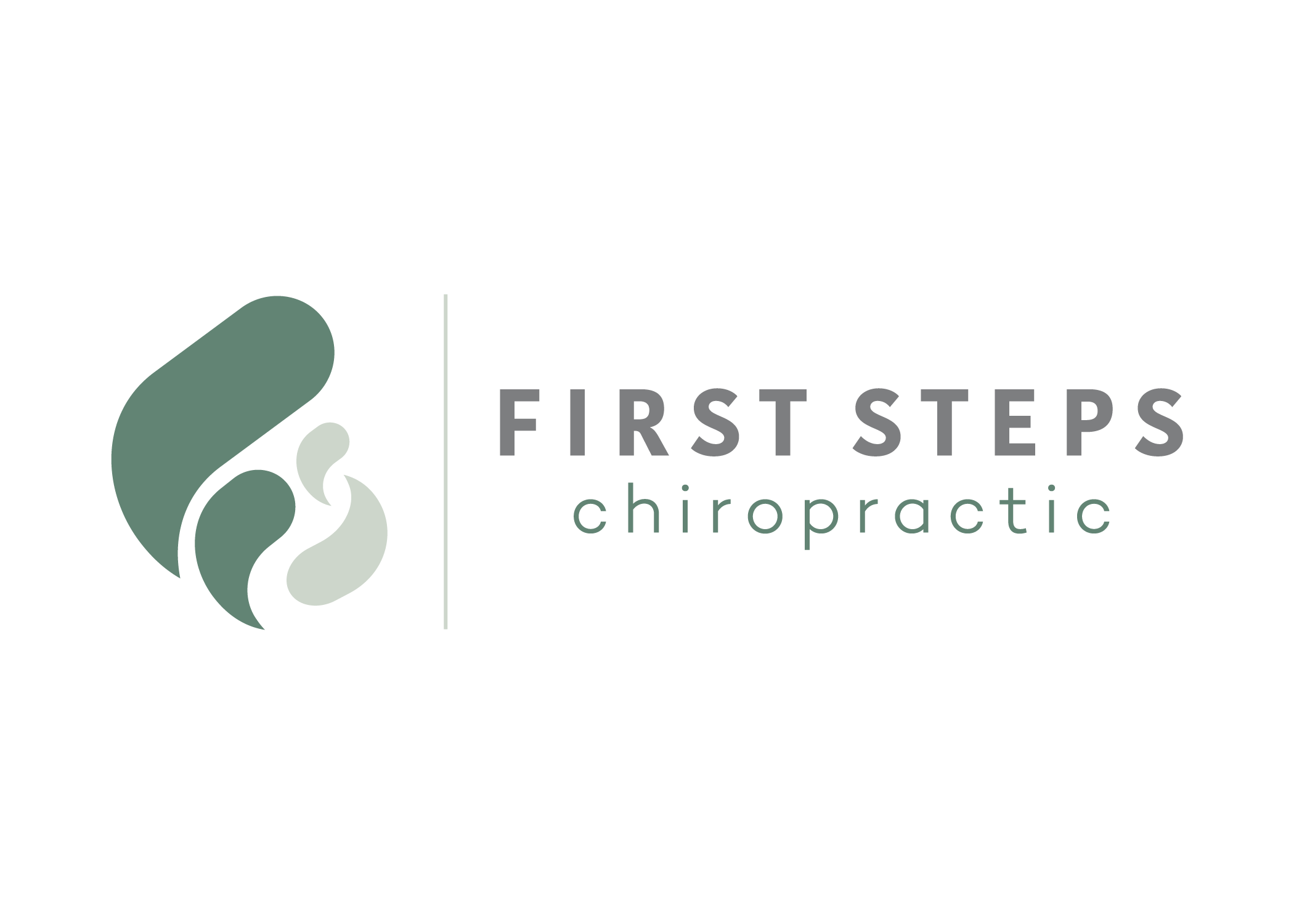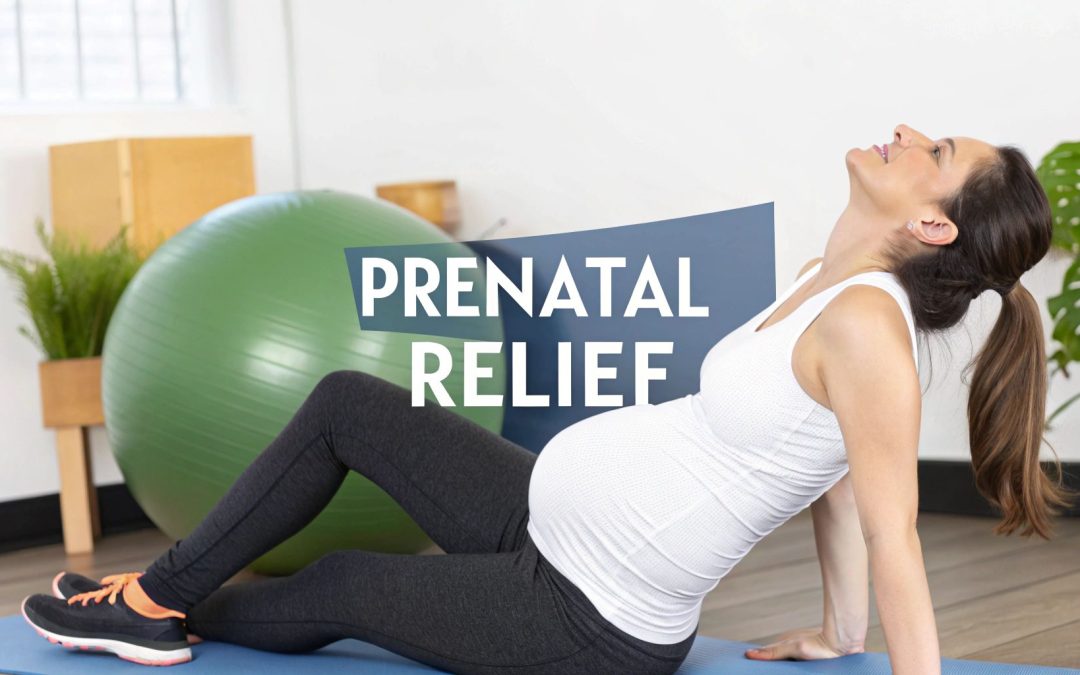Finding the right prenatal exercises for back pain can honestly be a game-changer. These aren't about high-intensity workouts; they're about strengthening your core and gently releasing all that built-up tension. When you target the specific muscles supporting your growing baby, you can seriously reduce that nagging ache and improve your posture along the way.
Why Your Back Aches During Pregnancy

Before we jump into the "how-to," it's super helpful to understand why your back is feeling so strained. It’s not just about the extra weight, I promise. Your body is going through this incredible transformation, and that persistent ache is a direct result of some major physiological shifts.
Knowing the root cause helps you move with purpose, ensuring you’re actually targeting the right areas for real relief.
One of the biggest culprits is your shifting center of gravity. As your uterus expands for your growing baby, it pulls forward, taking your lower back along for the ride. This causes the natural curve in your lumbar spine to become more pronounced—a condition called lordosis—which puts constant stress on the muscles and ligaments in your lower back.
The Role of Hormones and Posture
At the same time, your body starts pumping out a hormone called relaxin. It does exactly what it sounds like: it loosens up the ligaments and joints throughout your body (especially in your pelvis) to get you ready for childbirth. While totally necessary, this can make your spine and pelvic joints less stable and more prone to strain from just walking around or picking something up.
This hormonal effect, combined with the postural changes, creates a perfect storm for discomfort. You might find yourself leaning back to counterbalance your growing belly without even realizing it, which only strains those back muscles more. It's no wonder so many of us end up with a sore lower back and aching hips.
Understanding these interconnected changes is the first step toward finding relief. The goal of prenatal exercises isn't just to stretch; it's to actively counteract these forces by building a strong, supportive foundation for your spine.
Building Strength to Combat Strain
That ache you feel is a clear sign that your back and core muscles are working overtime. Without enough support, those muscles get tired and strained pretty easily. This is exactly where targeted exercise makes all the difference.
It’s a global issue, too. More than 60% of pregnant women report dealing with low back pain, which can really get in the way of daily life. The good news is that strengthening your abdominal and back muscles is a proven strategy.
The American College of Obstetricians and Gynecologists (ACOG) even emphasizes that staying physically active during pregnancy can lower both the risk and severity of this common problem. You can check out their full guidance on physical activity during pregnancy at ACOG.org.
Building a Strong Core to Support Your Spine
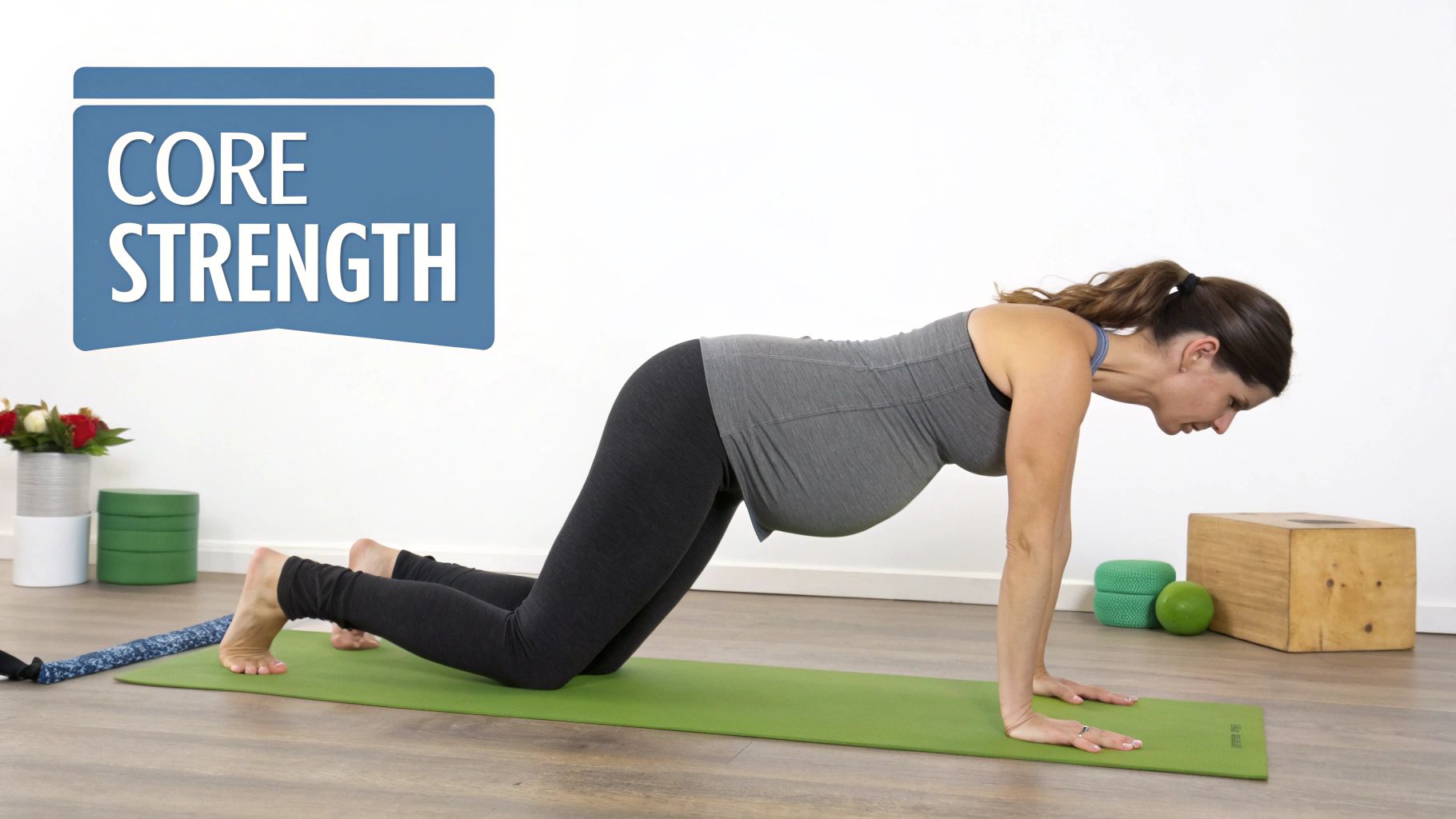
Think of your core muscles as your body's own built-in corset. When these muscles are strong and properly engaged, they provide incredible stability for your pelvis and lower back. This is your number one defense against the forward pull of your growing belly.
Building core strength is probably the most powerful tool you have in the fight against pregnancy-related back pain.
This isn't about doing endless crunches or holding intense planks like you might have done before pregnancy. Instead, we’re focusing on the deep, stabilizing muscles that wrap around your midsection like a supportive belt—specifically the transverse abdominis and pelvic floor.
Learning to activate these muscles correctly helps you maintain better posture and takes a massive load off your strained spinal ligaments. The goal here is to create stability from the inside out with gentle but highly effective prenatal exercises for back pain.
Foundational Moves for Core Stability
Let's start with a few key exercises that are both safe and incredibly beneficial throughout your entire pregnancy. Always remember to sync your movement with your breath. A good rule of thumb is to exhale on the effort and inhale as you relax. This mindful approach ensures you’re activating the right muscles without creating unwanted pressure.
The Pelvic Tilt
This subtle movement is an absolute powerhouse for relieving lower back pain. It directly targets the muscles that support your pelvis and is versatile enough to be done lying down, standing, or on all fours.
- How to do it (lying down): Lie on your back with your knees bent and feet flat on the floor (this is perfectly safe for short periods). Take a deep breath in. As you exhale, gently press your lower back into the floor, tilting your pelvis up just slightly. Inhale as you return to a neutral spine.
- Trimester Tip: After the first trimester, you'll want to avoid lying flat on your back for extended periods. Simply switch to performing this exercise standing against a wall or on your hands and knees.
Cat-Cow Stretch (Marjaryasana-Bitilasana)
This classic yoga pose is fantastic for increasing spinal mobility. It gently stretches your back while simultaneously engaging your core, providing a beautiful, flowing rhythm for your spine.
Start on your hands and knees with a flat back. As you inhale, let your belly drop and look forward into the "Cow" position. As you exhale, round your spine up toward the ceiling and tuck your chin to your chest for the "Cat" position. Try to initiate the entire movement from your tailbone.
A common mistake is to only move from the upper back. Instead, imagine your spine moving like a wave, starting from your pelvis and traveling all the way up to your head. This ensures the entire length of your back benefits from the stretch.
Advancing Your Core Routine Safely
Once you feel comfortable with the basics, you can begin to incorporate exercises that add a bit more of a stability challenge. Just remember to always prioritize perfect form over the number of repetitions you do.
Modified Bird-Dog
The Bird-Dog is an excellent exercise for strengthening the deep muscles that run along your spine and for improving your balance. During pregnancy, the key is to keep the movement slow and controlled, avoiding any twisting in the pelvis.
- Starting Position: Begin on all fours, with your hands directly under your shoulders and knees under your hips. Gently engage your core by drawing your navel in toward your spine.
- The Movement: Exhale as you extend one arm straight forward and the opposite leg straight back. Your goal is to keep your hips perfectly level and your back flat—imagine you could balance a cup of tea on your lower back.
- Hold and Return: Hold the position for a breath, then inhale as you slowly and with control return to the starting position. Repeat on the other side.
For anyone looking to dive deeper into these techniques, our guide on how to strengthen core muscles offers more insights that can be adapted for pregnancy. Building this foundational strength not only eases your current discomfort but also sets you up for a smoother postpartum recovery. Consistency really is your best friend here.
Gentle Stretches for Tension Release and Flexibility
While building a strong core gives your body a supportive foundation, releasing tight muscles is the other half of the equation for back pain relief. When the muscles in your hips, glutes, and lower back get tense from all the postural changes of pregnancy, they pull on your spine and can make your pain so much worse.
Gentle, pregnancy-safe stretches are perfect for melting away that tension. These movements are all about creating space and improving flexibility, which can bring immediate relief to a tight, aching back.
This infographic breaks down just how common back tension becomes as your pregnancy progresses, and it offers a simple, sustainable routine to help you find relief.
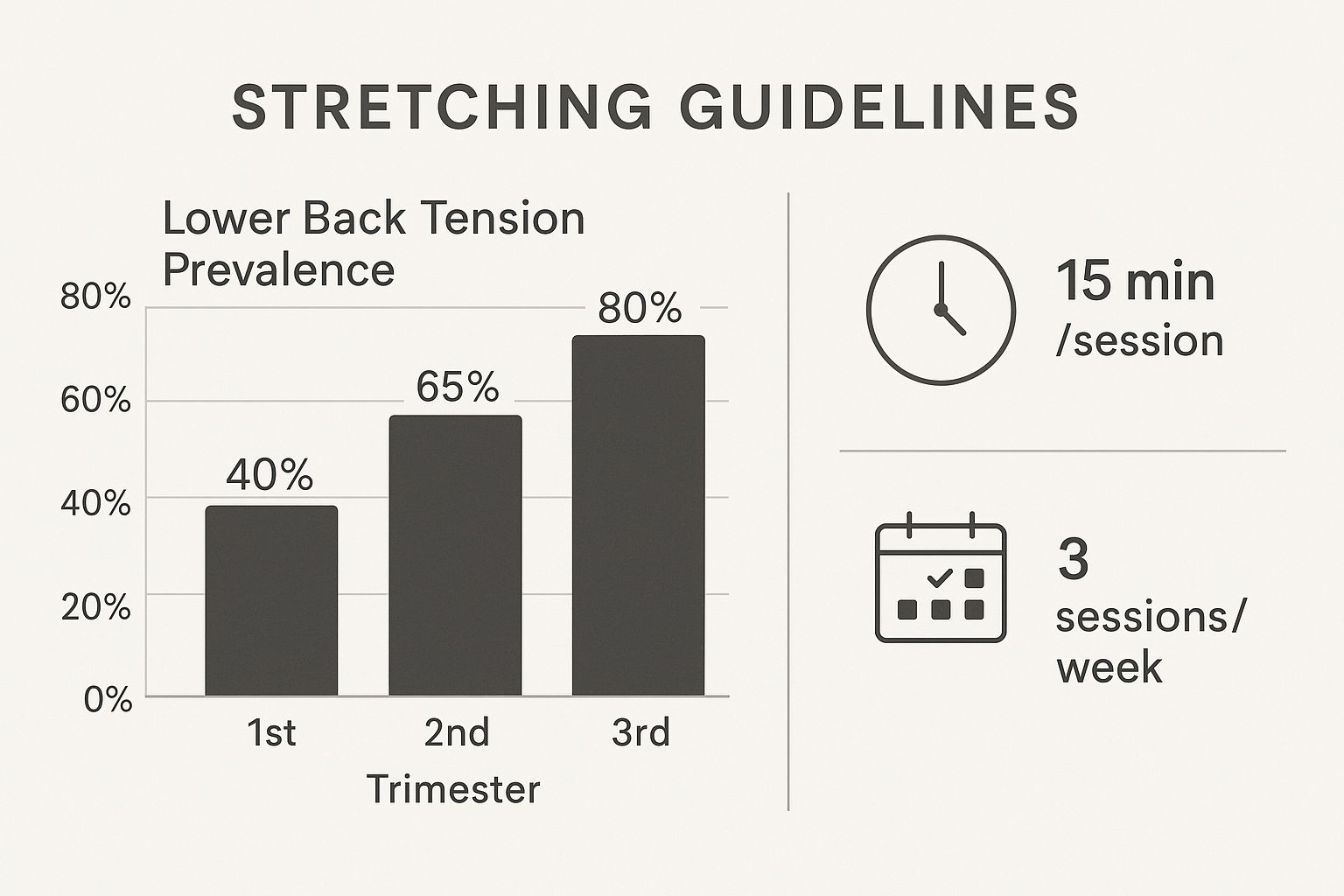
As you can see, the need for relief definitely grows right along with your baby. The good news? A commitment of just 15 minutes a few times a week can make a profound difference.
Stretches to Soothe Your Lower Back and Hips
The real key to a good stretch during pregnancy is to move slowly and never push into sharp pain. You’re aiming for a gentle pulling sensation, not an intense strain. Remember, the hormone relaxin is making your joints much more flexible, so it's surprisingly easy to overdo it if you aren't listening closely to your body.
Supported Standing Hamstring Stretch
Believe it or not, tight hamstrings can pull on your pelvis and be a sneaky contributor to lower back pain. This supported version keeps you stable while you stretch.
- How to do it: Stand facing a sturdy chair or a low table. Place the heel of one foot up on the surface, keeping that leg straight but without locking your knee.
- The Movement: With a straight back, gently hinge forward from your hips. Stop when you feel a light stretch in the back of your thigh. Hold it for 20-30 seconds, breathing deeply, and then switch over to the other side.
Seated Piriformis Stretch for Hip Relief
This stretch is an absolute lifesaver for that deep tightness in the hips and glutes, which can sometimes lead to sharp, sciatic-like pain. In fact, knowing the difference between general back pain and sciatica is crucial, and you can learn more about pregnancy sciatica pain relief in our detailed guide.
- How to do it: Sit up tall in a sturdy chair with both feet flat on the floor. Cross your right ankle over your left knee to create a "figure four" shape.
- The Movement: Keeping your spine long, gently lean forward until you feel that satisfying stretch in your right glute and hip. Hold right there, breathing into the sensation for about 30 seconds before you switch legs.
Restorative Poses for Total Relaxation
Sometimes, the very best thing you can do for your back is just let it decompress completely. Restorative poses use props like pillows to support you, helping your muscles finally let go.
The most important instruction is to listen to your body. If a stretch feels good, breathe into it. If it causes any discomfort, back off immediately. Your body knows what it needs.
Combining strengthening work with these flexibility-focused prenatal exercises creates a powerful, well-rounded approach to managing back pain. The research confirms it, showing that between 50% and 70% of pregnant women experience lower back pain. One study even highlighted that when women combined pregnancy exercise with prenatal yoga, they saw a major drop in pain severity. A remarkable 85% of participants who started with moderate or severe pain reported only light pain afterward—a result linked to better blood flow and stronger musculoskeletal support.
A modified Child's Pose is the perfect way to end your routine. Kneel on the floor, but take your knees wide apart to make plenty of room for your belly. You can use pillows or a bolster under your chest and head to bring the floor closer to you. This allows your lower back to release without any strain at all.
Low-Impact Cardio to Manage Pain and Boost Wellness
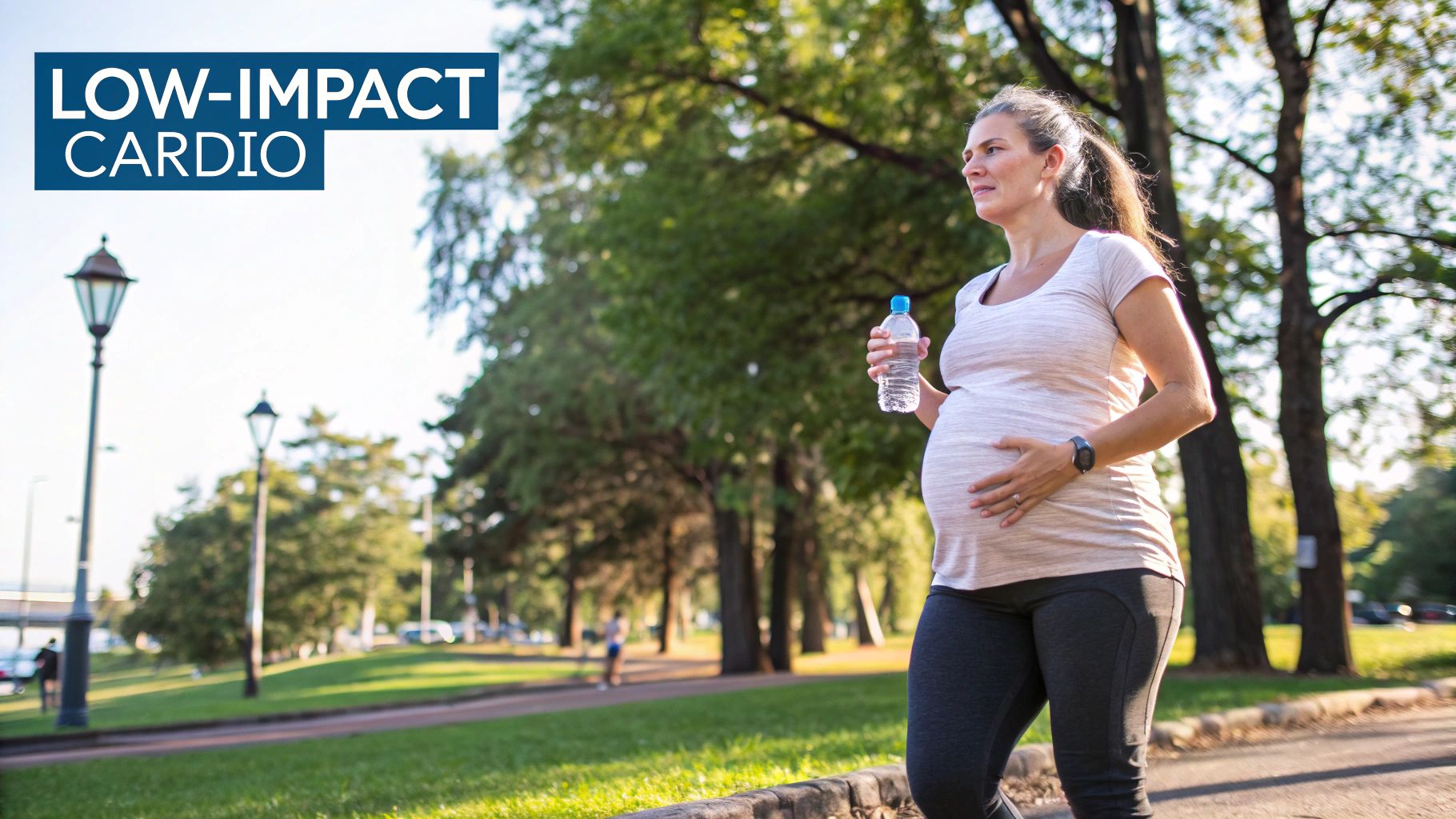
While targeted stretches and strength work are a huge piece of the puzzle, don't forget about the power of getting your heart rate up—gently, of course. Low-impact cardio is one of the most effective prenatal exercises for back pain because it gets your blood pumping, delivering a fresh supply of oxygen to your sore, tired muscles and helping to dial down inflammation.
This boost in circulation does more than just soothe your back; it's a fantastic way to fight off that classic pregnancy fatigue and can even help you get a better night's sleep. The whole idea is to pick activities that support your changing body instead of jarring it.
Most experts suggest aiming for around 150 minutes of moderate-intensity activity each week. That might sound like a lot, but you don't have to do it all at once. Breaking it up into smaller, more manageable 20-30 minute sessions throughout the week is just as beneficial and, let's be honest, much more realistic.
Top Cardio Choices For Expecting Mothers
When it comes to prenatal cardio, the goal is simple: move your body without adding extra stress to your joints and ligaments, which are already working overtime. Luckily, you have some great options.
- Brisk Walking: This is probably the easiest and most accessible prenatal exercise out there. All you need is a good pair of supportive shoes. Walking strengthens the muscles in your legs, glutes, and back without any harsh impact, which naturally helps you carry yourself with better posture.
- Swimming or Water Aerobics: The water is an absolute gift during pregnancy. It creates a buoyant, almost weightless environment, giving your joints a much-needed break from gravity's pull. This is especially amazing on days when your back feels extra tender or swollen.
- Stationary Cycling: As your baby bump grows, your center of gravity shifts, and your balance can get a little tricky. A traditional bike might feel risky, but a stationary bike takes the fear of falling out of the equation. It provides a fantastic cardio workout that's easy on your pelvis and lower back.
A great rule of thumb is the "Talk Test." You should always be able to hold a conversation while you're moving. If you find yourself too breathless to chat, that's your body's signal to dial back the intensity a bit.
Choosing Your Low-Impact Prenatal Cardio
Deciding which activity is right for you often comes down to what feels best for your body on any given day. To help you choose, here's a quick comparison of our top picks.
| Cardio Activity | Key Benefit for Back Pain | Safety Considerations |
|---|---|---|
| Brisk Walking | Strengthens postural muscles without jarring the spine. | Wear supportive shoes with good arch support to prevent foot and back strain. |
| Swimming | Buoyancy removes pressure from the spine and joints. | Avoid deep diving or jumping. Be mindful of slippery pool decks when entering and exiting. |
| Stationary Cycling | Provides a stable workout, protecting the back and pelvis. | Adjust the seat and handlebars for an upright posture to avoid hunching over. |
Each of these options offers a safe and effective way to stay active, but always listen to your body and choose what feels supportive and comfortable.
How To Fit Cardio Into Your Routine
Finding a rhythm that works for you is what makes a routine stick. Maybe a 30-minute brisk walk after dinner helps you digest your meal and eases the tension that built up in your back during the day. Or perhaps a morning swim is what you need to feel energized and start your day on a positive note.
No matter what you choose, always start with a gentle five-minute warm-up—think marching in place or doing some easy arm circles. When you're done, cool down with some of the gentle stretches we covered earlier. These simple bookends to your workout will help prevent soreness and make every session safer and more effective for keeping that back pain at bay.
How to Safely Weave Exercise into Your Daily Life
Lasting relief from back pain isn't about hitting the gym for a few intense workouts. The real magic happens when you start weaving supportive prenatal exercises into your daily life. It’s all about creating a mindful approach to fitness where every movement is both effective and completely safe for you and your baby.
Consistency is so much more important than intensity right now. A simple, 15-minute routine of pelvic tilts and gentle stretches every day will do far more for your back pain than one tough, hour-long session once a week. Think of it as making small, regular deposits into your body's wellness bank.
Tuning into Your Body’s Signals
During pregnancy, your body is constantly giving you feedback. Learning to listen to its signals is the single most important part of any exercise plan. You should feel your muscles working or a gentle stretch, but you should never feel sharp, shooting, or sudden pain.
Pain is your body's way of saying "stop." Trying to push through it can lead to injury, especially since the hormone relaxin is making your ligaments looser and more vulnerable.
Your guiding principle should always be comfort and control. If a movement causes any discomfort, back off or modify it. Your body knows exactly what it needs, so trust your intuition.
For some women, this mindful approach to movement is all it takes. Others find that combining exercise with other support systems really helps. Our guide on chiropractic care during pregnancy explores how keeping your spine aligned can be a fantastic complement to your fitness routine.
When to Modify or Stop an Exercise
Knowing the warning signs will empower you to exercise with confidence. It’s critical to stop immediately and call your doctor if you experience any of the following during or after your workout:
- Vaginal bleeding or any leakage of fluid
- Dizziness, shortness of breath, or feeling faint
- Chest pain or heart palpitations
- Painful contractions that don't stop when you rest
- Calf pain or swelling
On a simpler note, investing in a good pair of supportive shoes is a small change with a powerful impact on back protection. Proper footwear gives you a stable foundation, absorbing shock and promoting better posture from the ground up, whether you're out for a walk or doing standing stretches.
The evidence for this is overwhelming. Engaging in prenatal physical activity is proven to decrease pain intensity and functional disability from pregnancy-related back pain. A 2023 meta-analysis showed that active pregnant women reported major reductions in pain severity, solidifying exercise as a key therapeutic strategy. You can read the full research about these findings on PMC.
Building these safe, consistent habits is your best path to a more comfortable and enjoyable pregnancy.
Common Questions About Prenatal Exercise for Back Pain
Jumping into a fitness routine during pregnancy brings up a lot of questions. It's totally normal to feel a little uncertain about what’s safe and effective, even when you have the best intentions. We’ve pulled together the most common questions we hear about using prenatal exercises for back pain to give you clear, straightforward answers.
Our goal is to help you move with total confidence, because your peace of mind is just as important as the physical relief you’re seeking.
When Is the Best Time to Start?
As long as you have the green light from your doctor, you can start gentle exercises like walking and pelvic tilts as early as the first trimester. The most important thing is to listen to your body and start slowly.
If you were already active before your pregnancy, you can often just continue with a modified version of your current routine. For anyone new to exercise, the second trimester is often the sweet spot. That’s usually when the morning sickness and fatigue of early pregnancy start to fade, making it a great time to begin a more structured program.
Are There Any Exercises I Should Absolutely Avoid?
Yes, absolutely. Your safety and your baby's safety always come first. You'll want to steer clear of any activity that comes with a high risk of falling or any impact to your abdomen—think contact sports, outdoor cycling, or skiing.
Beyond that, there are a few specific movements to skip:
- Exercises on your back: After the first trimester, lying flat on your back for too long can potentially restrict blood flow. It’s best to avoid it.
- High-impact motions: Anything that involves jarring, jumping, or abrupt movements should be put on pause for now.
- Deep twisting or heavy lifting: These can place too much strain on your core and back muscles, which are already working overtime.
A huge red flag to watch for is "coning" or bulging of your abdomen during an exercise. If you see this, stop immediately. It's a sign that the movement is creating too much internal pressure.
How Soon Can I Expect to Feel Relief?
Every pregnancy is different, but many women start feeling a real improvement in their back pain within two to three weeks of consistent, gentle exercise. A good goal is 20-30 minutes of movement, about three to five times a week.
At first, you’ll likely notice the benefits of better posture and less muscle tension. Over time, as your core and back muscles get stronger, that relief becomes much more significant and lasting. Just remember, consistency is way more important than intensity.
What if an Exercise Makes My Back Pain Worse?
If any movement or stretch makes your pain worse, stop right away. Pain is your body’s way of telling you something isn’t right. It could be something as simple as improper form, or maybe that particular exercise just isn’t a good fit for your body right now.
Try to pinpoint what caused the pain—was it a specific position or the movement itself? Your best bet is always to check in with your doctor or a physical therapist who specializes in prenatal care. They can offer personalized advice and make sure you’re doing every exercise safely and correctly.
At First Steps Chiropractic, we specialize in supporting mothers through every stage of pregnancy with gentle, effective care that complements your fitness routine. Learn more about our prenatal services.
